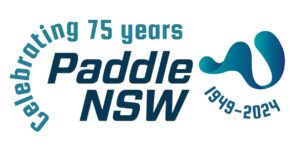Flatwater Skills Training Course & Assessment criteria: Best delivered by a qualified Instructor or Coach however when a candidate is ready for assessment this should be completed by a Qualified PaddleNSW Assessor who can process the Award. Detail of the full procedure is outlined in the Paddle Australia Qualifications Scheme Handbook.
Target: The next step for beginner paddlers who wish to improve effectiveness of their paddling skill in a kayak and/or canoe during a trip, as part of a group of peers, on flat, sheltered, undemanding water.
This Award, or equivalent skills and knowledge, is a prerequisite to becoming an AC Flatwater Guide or Instructor. When a participant continues to assessment for a Flatwater skills Award, they will need to demonstrate the following.
The Course will include the basics to control a craft in moderate conditions on flat, sheltered water. Skills will include:
- Launch and land efficiently
- Paddle the craft effectively in moderate winds:
- forwards, backwards, sideways and turning
- using correct forward, reverse, draw and sweep strokes
- Show efficient use of low supports
- Capsize and swim craft ashore
- Competently participate in simple rescues as victim and rescuer
- Competently accept a tow.
Knowledge component
- Demonstrate the ability to plan and navigate a 3 hour flatwater paddle:
- Store, operate and maintain appropriate safety equipment
- Select appropriate equipment and clothing with consideration of sun sense and hypothermia
- Navigate a 3 hour flatwater paddle
- Interpret weather for a flatwater environment.
Experience component
- Produce a verifiable log showing at least:
- Six trips of a minimum of three hours duration.
Communication component
- Demonstrate the ability to maintain effective communication with a group.
Paddle Technique: a Paddler will need to understand and demonstrate
Body rotation and power phase of stroke
Hand placement on paddle
Wrist movement for correct blade angle
Paddle depth where blade is buried throughout power phases
Entry point in water for each stroke
Exit point from water for each stroke
A course will also focus on injury prevention:
Sun Safe Protection
Posture: Supported feet to provide support to the lower back. Demonstrate the position of the pelvis to provide the healthiest lumbar spine configuration. Reach/power and the application of the Paddler’s box concept to develop effective and safe paddle strokes.
Explain the development of efficiency, endurance and strength when engaging the larger muscle groups.
Body & shoulders, elbow position for power and stability
Nutrition Drink:
Leadership and participant responsibilities clearly identified for an activity. Activity signals: The launch and land procedures, actions in the event of capsize






